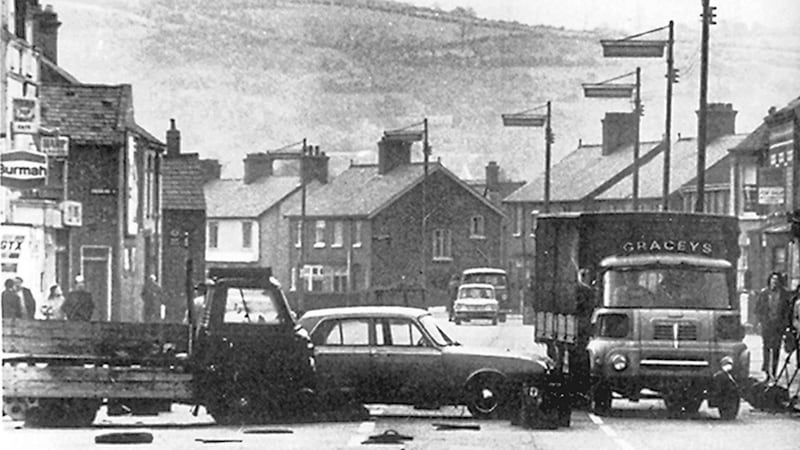January 16 1974
The Northern Ireland Civil Rights Association have finalised arrangements for a silent march to commemorate the Bloody Sunday killing of 13 Derry men by British troops on January 30 1972.
The 13 killings – described by NICRA as cold-blooded murder – followed a march in protest against internment. The commemoration march, to be held on Saturday January 26 at 2:30pm, will be followed by the unveiling of a 16-foot-high memorial to the dead.
The memorial has been carved in limestone by Ballycastle sculptor Cathal Newcombe, who was interned in Long Kesh at the time of the Bloody Sunday killings. It will be erected next week on a four-ton base near Rossville flats in Derry’s Bogside area.
About 12,000 people attended the Bloody Sunday march, and the commemorative march will follow the same one-and-a-half mile route, starting from the Bishops Field in Creggan.
Announcing details at a press conference yesterday, NICRA organiser Mr Kevin McCorry said: “Those taking part will be asked to march in total silence as a mark of respect to the dead.”
Since the Bloody Sunday killings in January 1972, the families of the dead, and their supporters, have faced a long battle seeking justice, a battle that continues five decades on.

Another Body Blow is Dealt to Nixon
President [Richard] Nixon was dealt another body blow in Washington yesterday over Watergate, when six technical experts reported that an 18-minute gap on a key White House tape could not have been caused in the way described by the President’s personal secretary.
The panel of experts told Federal Judge John Sirica it was their unanimous opinion that a mysterious buzzing sound which obliterated a conversation between Mr Nixon and his former chief of staff H H (Bob) Halderman occurred “in the process of erasing and re-recording at least five, and perhaps as many as nine, separate and continuous segments”.
They said the erasure could not have occurred accidentally through unintended contact with the recorder’s foot pedal – an explanation offered in sworn testimony by Mr Nixon’s personal secretary Miss Rose Mary Woods.
The office of the White House Counsel said it had received a summary of the experts’ report and would have no comment while it was under study.
“Since this received report is only a summary, and since the matter is still within the jurisdiction of the district court, any premature comment would only contribute further to existing confusion surrounding the tapes,” it said in a statement.


